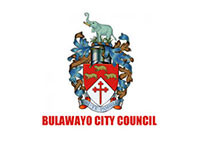
IN the ever-evolving world of public relations (PR), where trust is currency and perception shapes reality, the power of storytelling has never been more vital.
While Press releases, media briefings and reports remain essential, they often lack one critical ingredient: Emotional resonance.
Storytelling fills that gap. It is the art of transforming facts and figures into meaningful narratives that connect with people on a personal level.
It is no longer enough to communicate; PR professionals must communicate with impact. That is where storytelling shines.
At its core, storytelling in PR is about more than just conveying information. It is about weaving messages into narratives that are relatable, memorable and persuasive.
In a world saturated with content and competing voices, people remember stories, not statistics. Stories evoke emotion and emotion drives engagement, loyalty and action.
PR is essentially relationship management. Whether the audience is customers, investors, media, employees or the public, strong relationships are built on trust — and trust is built through authenticity.
Stories help organisations to show, rather than tell, who they are and what they stand for.
- Public relations: Why data analytics will save the PR profession
- Madzibaba thrills at IPRCZ awards
- Public relations: Why data analytics will save the PR profession
- Madzibaba thrills at IPRCZ awards
Keep Reading
Consider how successful brands such as Apple or Coca-Cola use storytelling. When Apple markets its products, it does not just sell hardware. It tells stories about creativity, innovation and breaking barriers. Its advertisements and keynotes showcase real people — artistes, students, entrepreneurs — who use Apple technology to achieve extraordinary things. This human angle makes the brand feel less like a corporation and more like a companion in the user’s journey.
In the Zimbabwean context, consider a local agricultural startup using storytelling in its PR campaigns. Instead of simply saying, “We provide drought-resistant seeds,” the company might share the story of Mai Chisamba, a smallholder farmer in Chivi who doubled her yield and sent her children to school thanks to those seeds. This not only highlights the impact but also makes the message personal and relatable.
Many organisations, especially those in technical, scientific or government sectors, face the challenge of translating complex information for the general public. Storytelling offers a way to simplify and contextualise data in ways people can understand and care about.
Take climate change communication as an example. Telling the public that “the global average temperature has increased by 1,5°C” might not move them to action. But telling the story of a rural community where maize crops have repeatedly failed due to shifting rainfall patterns — and how local adaptation strategies are helping — creates a vivid, tangible picture. It connects the dots between abstract science and lived experience.
In times of crisis, storytelling can be a tool not just for explanation but for redemption. A well-crafted narrative can humanise an organisation, show empathy, and convey accountability.
Rather than issuing a cold, generic statement, a company facing a crisis might tell the story of how it is responding — through the voices of employees, community members or affected stakeholders.
A global example is Toyota’s recall crisis. The company did not just issue Press releases; it apologised sincerely, shared stories of how it was fixing the issues and reinforced its commitment to safety through customer testimonials. This strategy helped to rebuild trust and protect its reputation.
Storytelling is not just a tactic — it is a strategy for long-term relationship building. People want to feel seen, heard and valued. When an organisation tells stories that reflect on the lives, values and aspirations of its stakeholders, it creates a deeper connection.
Universities, for instance, can share stories of student success, alumni impact or community outreach projects. These narratives not only celebrate achievement but also serve as testimonials to institutional values like excellence, inclusivity and social responsibility.
A compelling PR story typically includes a relatable protagonist, conflict or challenge, resolution and emotional undertone. This is also called rising action in script writing.
The format can vary — a video, blog post, infographic, photo essay or even a social media thread — but the essence remains the same: make the audience feel something real.
In today’s media environment, information is cheap. What sets a PR message apart is its ability to influence — not just by informing, but by inspiring. That is the art of storytelling. It gives organisations a voice that people want to listen to. It brings data to life, connects across cultural divides and creates meaning in a noisy world.
As the communication landscape grows more fragmented and competitive, storytelling will not just be an added skill for PR professionals. It will be their superpower.
- Cliff Chiduku is the director of marketing, information and public relations at Manicaland State University of Applied Sciences in Mutare. He writes here in his personal capacity. He can be contacted on cchiduku@gmail.com or call/app +263775716517.










